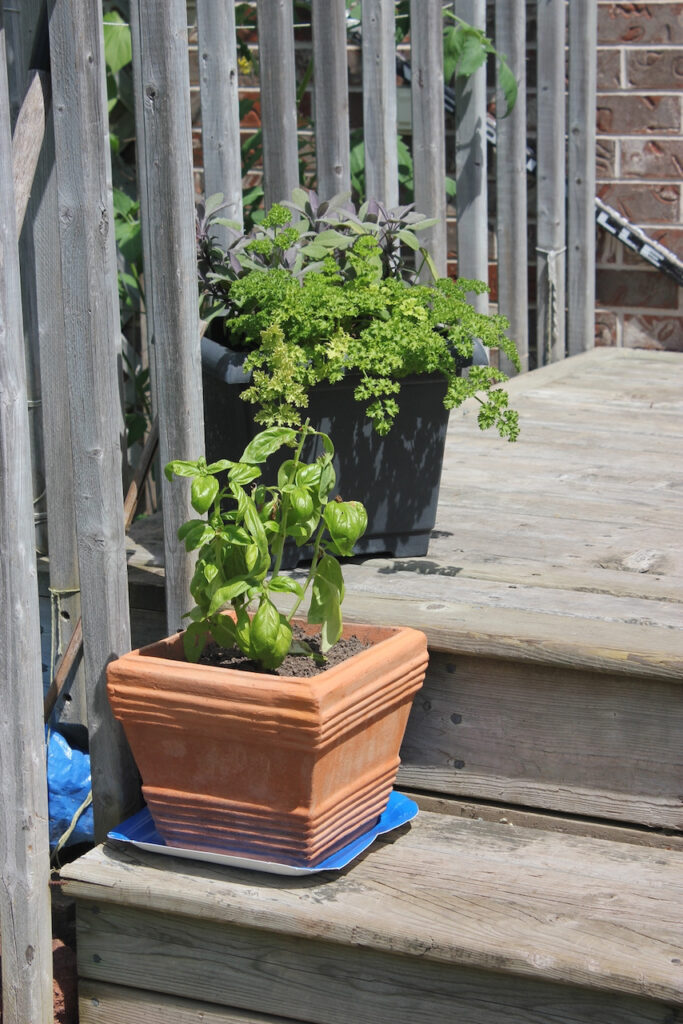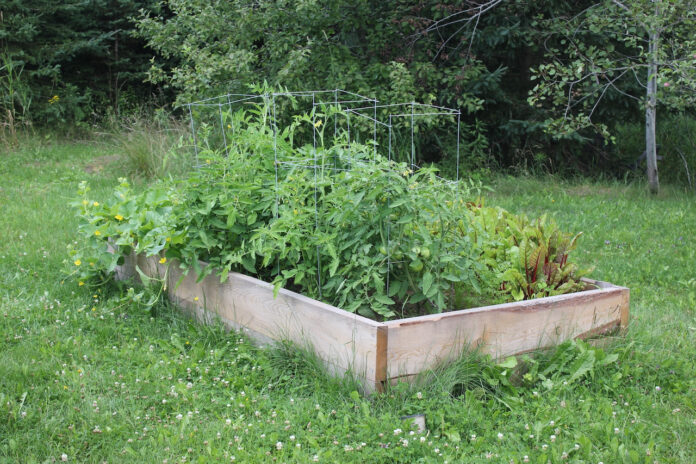By Grant Wood
Saskatchewan Perennial Society
“Container gardening” is not a new method of gardening, but it has become quite popular in recent years. Plants, annual, perennials and vegetables, can be grown in a variety of containers including nursery pots, decorative pots, half barrels, garden planters, and even raised beds.
Consider the purpose of your garden. Do you want a soup & salad garden where the objective is to harvest fresh vegetables with no long term storage or processing involved? Or, do you want a sustenance garden, that will produce as much food as possible to feed your family through the winter. Sustenance gardens tend to be large and most commonly involve storage and processing of vegetables. The third option is a combination, which includes both types of gardening. Your choice will determine if container gardening is suitable, and how many / type of container to use.
Container gardening offers many benefits, however, there are also challenges.
Benefits:
• Containers allow you to start gardening on a small, manageable scale
• Convenience ; vegetables and herbs close to the kitchen are more likely to be used
• Depending on design, containers can make gardening more physically accessible
• Can create a superior growing environment; if containers are portable, they can be moved to an area of the yard which receives more light and heat. They can be filled with high quality potting media that is superior to garden soil. Use of garden soil is not recommended for containers, as it may negatively influence drainage and aeration around the roots
• Container media can be watered and fertilized more uniformly which will produce better quality vegetables
• If there is a chance of frost you can bring plants into the house/garage and put outside again when it is warmer, thus extending the growing season. You can also bring plants inside the house for the winter – for example, herbs and several ornamental flowers
• Can utilize areas of the yard including deck, patio, driveway, balcony, sidewalk, rooftop, etc. for food production
• Can control aggressive herbs, mint for example and prevent it from spreading in your yard
• Weeding usually is less of an issue in containers than in a garden
• Can isolate any diseased plants ; you can easily remove diseased plants so they don’t contaminate nearby plants

Challenges:
• Entire root system is above ground level and is restricted to the size of the container, so plants require more frequent watering , probably daily when plants become large. Plants die without water!
• Entire root system exposed to sunlight/heat, so often containers are hotter than if plants are growing in the ground ; cool-season crops prefer a cool root system, and may need double-potting
Almost any container will work, but should have the following requirements:
• Hold media ; within reason, the larger the rooting area, the better
• Water drainage is essential ; plants need moisture but they also require air around their root systems. Excess water should drain via a hole at the container base
• The material the container is made from, influences the moisture loss and the temperature; clay pots look good but are heavy, plus they dry quickly and require more frequent watering. They also need careful handling as they break easily.
• Light-weight containers are easier to move; for balconies, rooftops, and decks the weight-bearing load is important
• Longevity of containers ; fiber pots have a life span of 2 or maybe 3 years, while wooden containers may last many years
• Consider the look of the container ; even though the container may be free or cheap, does it fit into the landscape design, and will the neighbours approve
• Match size of plant to size of container ; larger plants like semi-determinate tomatoes require a larger container than smaller plants like spinach and lettuce
• Select cultivars recommended for container growing ; cultivars specifically selected for containers are often called “patio” “compact” or “bush”. They are often smaller plants, and yield less, but you will still be harvesting fresh vegetables
• Remember to carry out crop rotation for disease and insect control ; don’t plant the same vegetable type in the same container more than once every four years, and remove media if plants become diseased.
Container gardening can be very rewarding, so give it a try!
Grant Wood
Retired faculty, Department of Plant Sciences, U of S
This column is provided courtesy of the Saskatchewan Perennial Society (SPS; saskperennial@hotmail.com). Check our website saskperennial.ca) or Facebook page (facebook.com/saskperennial). With the end of the pandemic hopefully in sight we have reserved the Hall at the Forestry Farm for our Fall Plant Exchange, September 12, 2021.


